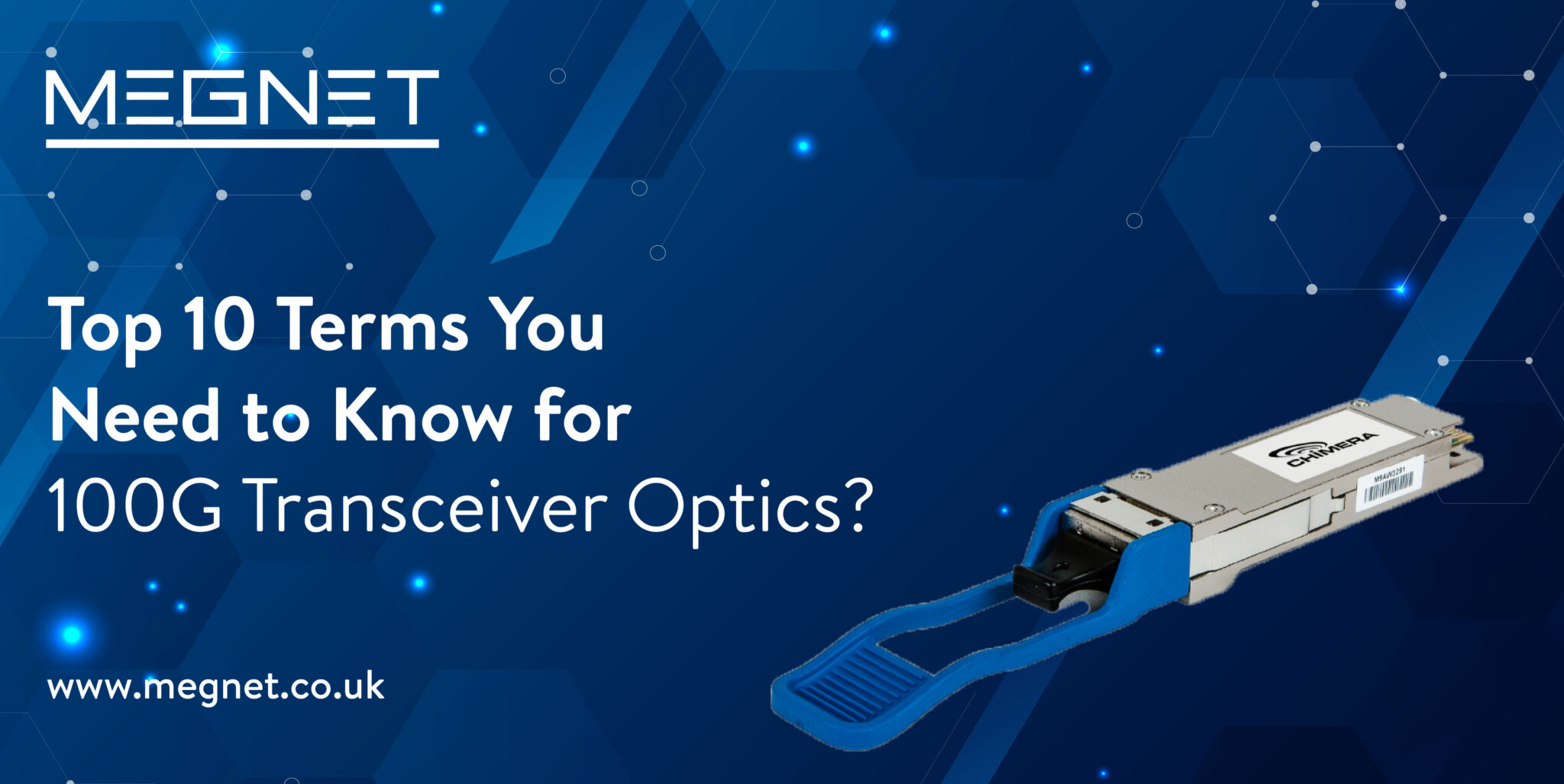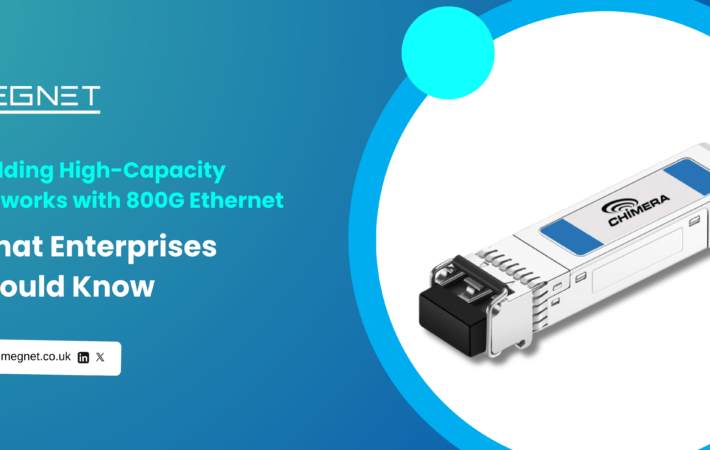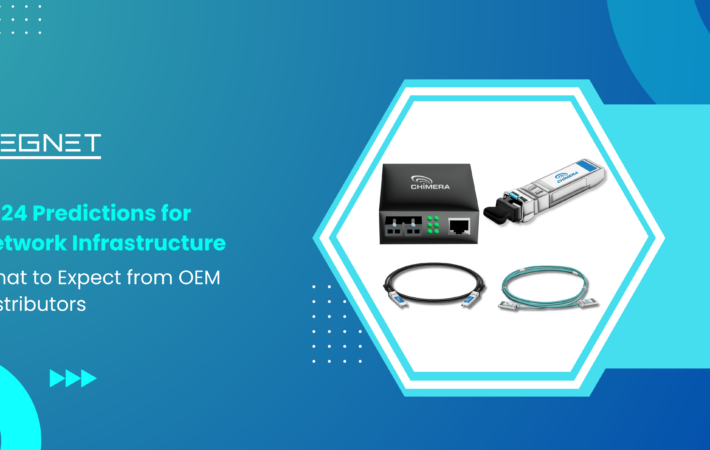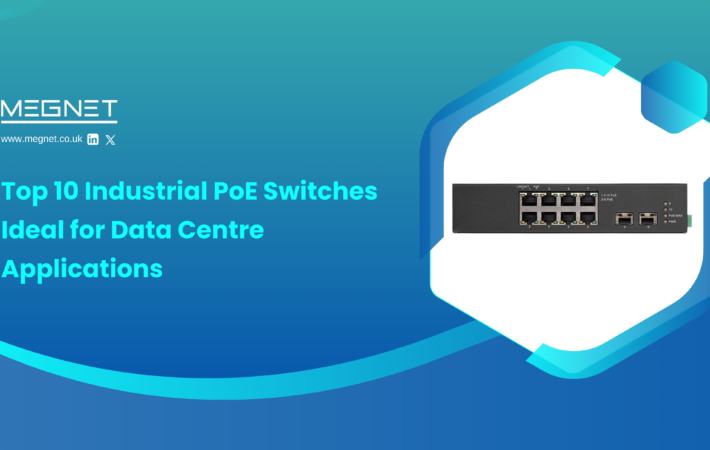
100G transceiver optics are becoming a need in today’s lightning-fast networking environments because of the exponential increase in data transmission. Today’s data-driven world necessitates the use of high-performance components that allow information to move freely across networks. Acquiring a working knowledge of fundamental concepts related to 100G transceiver optics is necessary for successful navigation of this space. This post will cover the 10 most important terminologies related to this topic, giving you a solid grounding in the field.
What Are 100G Transceiver Optics?
100G transceiver optics are cutting-edge modules that facilitate the transmission of data at a high rate in networking. They are the vital link between network equipment and the optical fiber infrastructure, facilitating the efficient data transmission at 100 gigabits per second (Gbps) or greater. These optics are available in a variety of forms, each of which is tailored to specific network requirements, making them a crucial component of contemporary data centers and communications networks. Before proceeding, check out some vital information around 400G transceivers.
Before proceeding, check out some vital information around 400G transceivers.
Top 10 Key Terms (Use-specific)
- Transceiver: A transceiver is a device that integrates the capabilities of both a transmitter and a receiver, enabling the transmission and reception of data using optical fiber.
- 100G Ethernet: The 100G Ethernet standard encompasses a high-speed networking protocol that establishes the guidelines for sending data at a rate of 100 gigabits per second (Gbps).
- Multimode vs. Single-Mode: The comparison between multimode and single-mode transceivers reveals that the former is specifically engineered for facilitating short-range connections within data centers, whilst the latter is mostly employed for establishing long-range connections.
- Form factor: An optical module’s packaging establishes its form factor, which serves as a fundamental differentiator among distinct optical modules.
The proliferation of packaging standards stems from the fast improvements in optical fiber communication technology, which has resulted in the regular introduction of new standards, which are frequently incompatible with previous ones.
Furthermore, the variety of application situations, with various transmission lengths, bandwidth requirements, and use contexts, mandates the use of multiple optical module form factors to meet these individual needs.

5. QSFP and CFP: QSFP (Quad Small Form-Factor Pluggable) and CFP (C Form-Factor Pluggable) are widely utilized transceiver form factors that possess distinct attributes and serve unique purposes.

- Forward Error Correction (FEC): FEC is a technology that improves data integrity by providing redundant information to remedy any transmission problems.
- SNR (Signal-to-Noise Ratio): SNR evaluates a signal’s intensity by contrasting it with the amount of background noise present.
- BER (Bit Error Rate): BER measures the frequency of wrongly received data bits and offers information about the reliability of a data link.
- Optical Modules and Compatibility: Optical modules come in a variety of forms, including SFP, SFP+, and XFP, and it’s important that they interact with the network’s hardware to ensure smooth operation.
- PAM4 vs. NRZ Modulation: Two modulation methods used in data transmission are PAM4 (Pulse Amplitude Modulation, 4 levels) and NRZ (Non-Return-to-Zero). PAM4 maximizes bandwidth efficiency by using four amplitude levels to represent two bits per symbol.
Although it calls for more complicated signal processing, it is perfect for high-speed applications like 100G and 400G Ethernet. Simpler but less bandwidth-efficient NRZ, with two amplitude levels per symbol, is frequently employed in slower applications.
The decision between them is based on the particular needs of the system, balancing complexity and spectrum efficiency.
Top 10 Terms (Product-Specific)

- 100GBASE-SR4: The 100GBASE-SR4 transceiver is designed for data center connections over limited distances. It employs multimode fiber and operates at a wavelength of 850 nm. It supports distances of up to 100 meters and provides cost-effective, high-speed connectivity within data centers. It can transmit data at 100 Gbps via its four parallel optical channels, making it optimal for high-density environments.
- 100GBASE-LR4: Long-distance data transfer is a specialty of the 100GBASE-LR4 transceiver. It runs at 1310 nm wavelength and employs the utilization of single-mode fiber. This transceiver’s range of up to 10 kilometers makes it ideal for long-distance connections between data centers or network nodes spread out across large regions.
- 100GBASE-CWDM4: The 100GBASE-LR4 transceiver is specifically designed for the purpose of transmitting data across long distances. The system utilizes single-mode fiber optic technology and functions at a specific wavelength of 1310nm. The transceiver has the capability to span lengths of up to 10 kilometers, rendering it appropriate for establishing connections between data centers or network segments over expansive geographical regions.
- 100GBASE-PSM4: Single-mode connections can be made in parallel using 100GBASE-PSM4. Four distinct single-mode fibers make up the parallel optical architecture that is used. 100 Gbps of total data rate is transmitted across each fiber at a rate of 25 Gbps. For short-range data center interconnects within a rack or between nearby racks, it is an effective solution.
- 100GBASE-ER4: Because of its long range, the 100GBASE-ER4 transceiver is widely used. To function, it employs C-band (1270 nm – 1330 nm) wavelengths sent through single-mode fiber. With a range of up to 40 kilometers, this transceiver is ideal for interconnecting data centers in different cities.
- 100GBASE-SR10: The 100GBASE-SR10 standard has been specifically developed to cater to the requirements of high-density applications. The system utilizes ten optical lanes that run in parallel, with each lane running at a speed of 10 Gbps. This results in a cumulative bandwidth of 100 Gbps. The aforementioned transceiver is well-suited for establishing connections over short distances within data centers, where the optimization of space and the provision of high bandwidth are of utmost importance.
- 100GBASE-LR10: The 100GBASE-LR10 receiver works well over long distances. It uses ten different bands in the C-band and can send data over single-mode fiber for up to 10 kilometers. It’s perfect for linking data centers together or extending network reach over long distances.
- 100GBASE-FR: For extended-reach applications in enterprise networks, 100GBASE-FR is created. With single-mode fiber, it can go up to 2 kilometers. This transceiver has a good mix between price and range, making medium-range communications in business settings possible.
- 100GBASE-DR: The 100GBASE-DR standard was developed with data center connections in mind. Single-mode fibers are used in a parallel configuration, with 25 Gbps of data capacity per fiber. This transceiver is optimized for high-bandwidth, low-latency short-range communications within data centers.
- 100GBASE-ZR: The 100GBASE-ZR standard is well-suited for establishing connections over extremely long distances. The device has the capability to transmit data up to a distance of 80 kilometers using single-mode fiber. This feature makes it highly suitable for establishing connections between data centers over long-haul links or for extending the network coverage to remote locations.
Know about the 10G base transceivers in the linked article.
Conclusion
The field of 100G transceiver optics is undergoing constant evolution. Some of the emerging developments in the field are enhanced energy efficiency, elevated data rates, and enhanced integration with networking equipment. In this dynamic industry, it is imperative to prioritize challenges such as guaranteeing backward compatibility and effectively handling the escalating demands of future data traffic growth.

By acquiring a comprehensive understanding of these fundamental terminologies, companies may effectively navigate the realm of 100G transceiver optics with a sense of assurance. In light of technological advancements, it is imperative for professionals engaged in high-speed data transmission to have a comprehensive understanding of these ideas. One should embrace the fast progression of networking technology and strive to be at the forefront of advancements in the realm of 100G transceiver optics.
FAQ's
100G transceiver is a high-speed optical module used in network equipment to send and receive data at a rate of 100 gigabits per second (Gbps).
100GBASE-SR4 100GBASE-SR4 is intended for short-distance connections (up to 100 meters) within data centers, whereas 100GBASE-LR4 is intended for long-distance transmission (up to 10 kilometers).
Yes, many 100G transceivers are built to work with ordinary fiber optic wiring, allowing for smooth integration.
For efficient high-speed data transfer, most 100G transceivers employ MPO/MTP connections.
When set correctly, certain 100G transceivers may function at lesser speeds like as 40G or 10G, providing backward compatibility.
The range varies depending on the kind, with short-range alternatives covering meters and long-range options covering tens of kilometers.
Yes, there are low-cost choices for a variety of applications, such as short-distance connections in data centers.
FEC ensures reliable communication by improving data integrity by correcting mistakes during transmission.
Yes, certain 100G transceivers handle various wavelengths, allowing for better utilization of the optical spectrum.
Higher data speeds, energy efficiency, and enhanced integration into network equipment are emerging technologies that will help network equipment keep up with growing networking demands.









Leave a comment
Your email address will not be published. Required fields are marked *